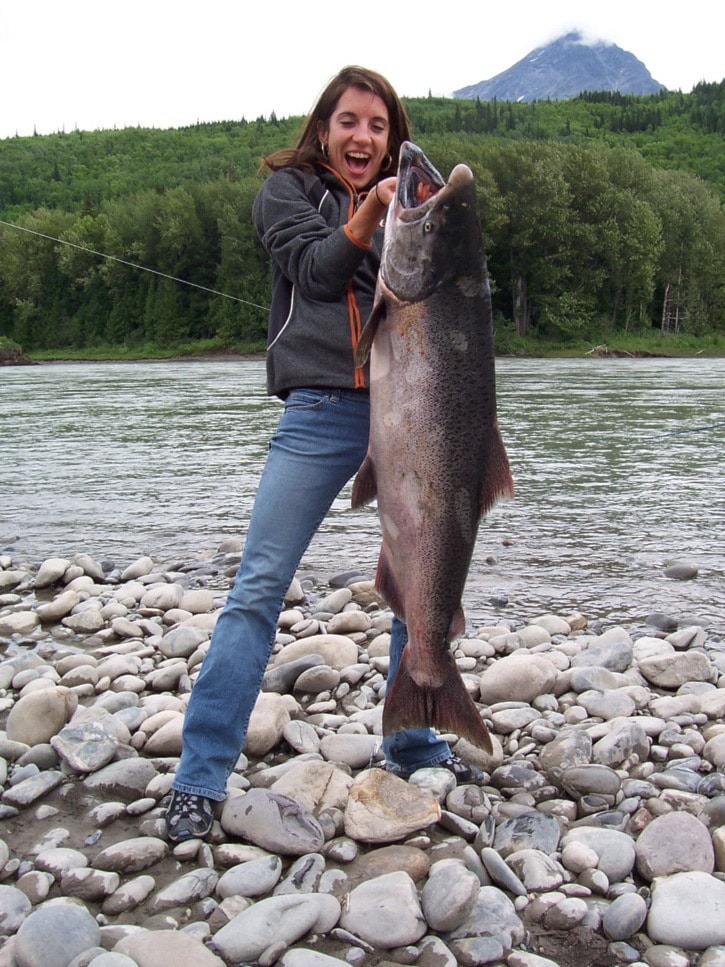The rivers are clearing and dropping, and anglers are finally hitting the rivers to try their hand at landing the big one in the Bulkley Valley and beyond. Mike O’Neill, manager at the Toboggan Creek Fish Hatchery, wants anglers to remember to check for a missing adipose fin if they land a salmon.
If the fin is missing, the head can be turned in at the hatchery, a few minutes north of Smithers, or at McBike in Smithers. Fish with clipped fins may have an embedded coded wire tag, which allows Fisheries and Oceans Canada (DFO) to keep track of where fish are being caught, and where they originated from.
“The key to us is to encourage people to turn the heads in, because the higher proportion you get turned in, the more accurate your data will be,” he said. “By turning these heads in, you get a better understanding of who’s catching which stocks.”
The DFO uses information from the tags to determine both commercial and angling limits. The recent closing of the commercial troll fishery is an example of how that information is used.
“That’s a good example of how you can use the coded wire tags to manage in-season, and make sure you’re not over harvesting,” said O’Neill.
The Toboggan Creek Hatchery releases about 120,000 fish every year. About 35,000 are coho, and the remaining 85,000 are chinook.
The Hatchery also tags and releases over 30,000 wild coho each year. In the 1980s and 1990s, there was a problem in B.C. with low numbers of coho, but the coded wire tag program allowed the DFO to determine that over harvesting was the problem, as eight out of ten fish were being harvested.
O’Neill said the Toboggan Creek coho may be the only stock being reared on the north coast, so tracking what happens to those fish is important, because the fish mingle with wild fish once they’re out in the Skeena and the Pacific.
“It’s used as an indicator stock for basically all the north coast wild stock,” he said. “One note of interest that people would probably be quite amazed by, in 2009, based on the data that we received through the coded wire tags, Alaska caught 3,200 Toboggan Creek coho, and our escapement was just over 6,000, so it shows you the value of the tagging program.”
Currently, O’Neill guesses that between 25 and 35 per cent of hatchery fish heads are turned in by anglers. He hopes that with further education that number will increase. It doesn’t hurt that anglers are also entered into a draw for fishing-related prizes when they do turn in heads. In 2010, Tracy De La Mare of Houston won the top prize of an Ambassadeur level-wind reel.
More importantly for O’Neill and the DFO, the higher the percentage of heads turned in, the more accurate their picture of the health of salmon stocks becomes.
“It benefits the wild stock. I think that’s the thing that a lot of people don’t understand, is that having the hatchery fish out there and tagged, mixing up and being sampled, it really benefits the wild stock, because any reduction in exploitation on our stock is going to benefit any wild stock that’s out there,” he said.
